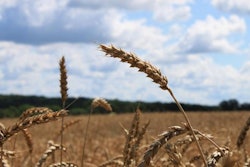
A rather unknown and undervalued protein crop that may soon become an important feed ingredient due to its revived importance in human nutrition.
Although more than 80% of global lupin seed production comes from Australia, few realize that lupins originate from the Mediterranean region – at least those of agricultural importance – because lupins are a flowering legume used for ornamental purposes too.
Lupins are found today in most areas of the world and their cultivation is expected to increase. This is because lupins are considered an important component of modern human food trends as they can replace certain properties of animal-derived foods. Thus, in anticipation of increased availability, it makes sense for the animal nutrition industry to familiarize itself better with this up-and-coming crop.
There are many species of lupins, and most of them are often categorized by the color of their flowers (white, blue or yellow), but what really counts is the concentration in bitter alkaloids. This anti-nutritional factor at its very least offensive activity lowers feed intake due to bitterness. Today, most lupin varieties cultivated for animal (and human) purposes are of the sweet-gene type and contain minimal amounts of bitter alkaloids. These varieties require no thermal processing for animals and thus they can be fed at relatively high inclusion levels.
Nutritional profile
Lupins contain 30% to 40% crude protein with a protein profile quite comparable to that of soybeans. In contrast to soybean seeds, however, they contain relatively lower levels of oil (less than 10%), making them a primary source of protein alone. Another distinct point of difference is the higher level of crude fiber (can reach up to 20% in certain varieties) that is the actual limiting factor in using lupins in animal feeds today. White lupins are the major animal feed ingredient and they contain on average 38% crude protein, 10% oil and 14% crude fiber. Varieties of white lupins with less than 200 mg/kg alkaloids can be fed up to 30% in broiler diets, but this level is seldom attempted as nutritionists are always conservative when it comes to raw materials that are not properly characterized. Therefore, 5% to 10% is used in early broiler diets, with up to 20% in late feeds. A most common inclusion level scheme is 5%, 10% and 20% in starter, grower and finisher broiler diets, respectively.
Higher levels are not attempted, not because of fear for alkaloids, as new varieties are now virtually harmless in that regard. Instead, it is the high concentration in non-starch polysaccharides in lupins that limit higher inclusion rates. Indeed, the level of oligosaccharides is high and also quite variable among varieties. As these anti-nutritional factors reside mainly on the outer layer of the seed, dehulling greatly improves the nutritive value of lupins – but this also increases their cost. At any rate, lupin oligosaccharides are rather similar to those found in soybeans and they may be counteracted by the use of specific enzymes against such alpha-galactosides, but this requires further investigation.
In more practical terms, the present reason why lupins are not used more in animal and specifically in broiler diets is because poultry producers and feed manufacturers do not have an easy access point to purchasing them. In other words, availability is the main hurdle, but this is expected to be reversed as the value of feed-grade lupins is recognized throughout the world.

















